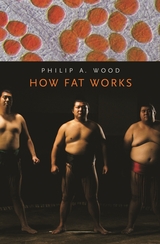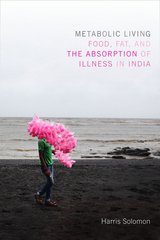
Whether classified as regulators of inflammation, metabolism, or other physiological functions, a distinctive set of molecules enables the human body to convey information from one cell to another. An in-depth primer on the molecular mediators that coordinate complex bodily processes, Body Messages provides fresh insight into how biologists first identified this special class of molecules and the consequences of their discovery for modern medicine.
Focusing on proteins that regulate inflammation and metabolism—including the cytokines and adipokines at the core of her own research—Giamila Fantuzzi examines the role body messages play in the physiology of health as well as in the pathology of various illnesses. Readers are introduced to different ways of conceptualizing biomedical research and to the advantages and pitfalls associated with identifying molecules beginning with function or structure. By bringing together areas of research usually studied separately, Fantuzzi stresses the importance of investigating the body as a whole and affirms the futility of trying to separate basic from clinical research. Drawing on firsthand interviews with researchers who made major contributions to the field, Body Messages illustrates that the paths leading to scientific discovery are rarely direct, nor are they always the only routes available.

As Elsner reveals, survival in extreme conditions such as those faced by seals is often not about running for cover or coming up for air, but rather about working within the confines of an environment and suppressing normal bodily function. Animals in this withdrawn state display reduced resting metabolic rates and are temporarily less dependent upon customary levels of oxygen. For diving seals—creatures especially well-adapted to prolonged submergence in the ocean’s cold depths—such periods of rest lengthen dive endurance. But while human divers share modest, brief adjustments of suppressed metabolism with diving seals, it is the practiced response achieved during deep meditation that is characterized by metabolic rates well below normal levels, sometimes even approaching those of non-exercising diving seals. And the comparison does not end here: hibernating animals, infants during birth, near-drowning victims, and clams at low tide all also display similarly reduced metabolisms.
By investigating these states—and the regulatory functions that help maintain them—across a range of species, Elsner offers suggestive insight into the linked biology of survival and well-being.


Freshwater turtles and goldfish can survive for several days without oxygen, some diving turtles for several months; hibernating animals can exist without food for long periods; others can survive extreme conditions such as desiccation, freezing, and thawing. These creatures are, in effect, self-sustaining life-support systems, with a mysterious ability to regulate their own metabolisms.
These capabilities raise important questions, which Hochachka and Guppy explore in this seminal new book. What mechanisms turn down (or off) cell metabolism and other cell functions? How does an animal such as an opossum know when to activate mechanisms for slowing or stopping tissue and organ functions? How does it know when to turn them on again? How extensive is metabolic arrest as a defense against harsh environmental conditions? Can we decipher universal principles of metabolic arrest from available data? The lessons to be learned are of potentially great interest to clinicians, because the authors provide a theoretical framework in which to organize an attack on the all-too-practical problem of protecting tissues against hypoxia. Areas that may be influenced include research on cardiac arrest, strokes, acute renal failure, liver ischemia, lung injury, respiratory defense syndrome, claudication, shock, and organ transplant. Investigation of other metabolic arrest mechanisms may be similarly useful in both clinical and agricultural fields.
This is a pioneering book of great use to biomedical/clinical researchers and to biologists, biochemists, and physiologists generally.


READERS
Browse our collection.
PUBLISHERS
See BiblioVault's publisher services.
STUDENT SERVICES
Files for college accessibility offices.
UChicago Accessibility Resources
home | accessibility | search | about | contact us
BiblioVault ® 2001 - 2024
The University of Chicago Press









